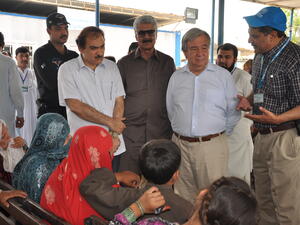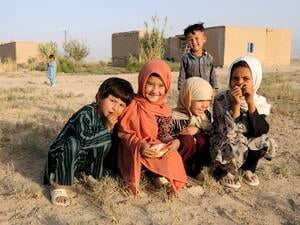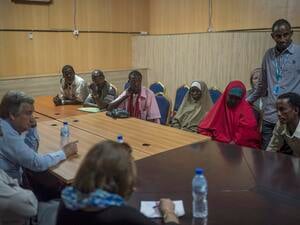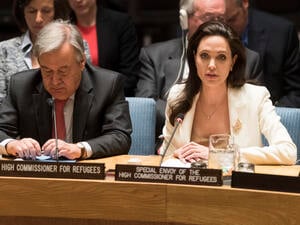World Refugee Day: UNHCR chief meets refugees, internally displaced in Kenya
World Refugee Day: UNHCR chief meets refugees, internally displaced in Kenya

High Commissioner António Guterres meets with internally displaced Kenyans at Naivasha Stadium in the Rift Valley. About 4,000 people displaced in post-election violence earlier this year remain in two Naivasha camps
NAIVASHA, Kenya, June 19 (UNHCR) - On the eve of World Refugee Day, UN High Commissioner for Refugees António Guterres on Thursday concluded a mission to one of the world's largest refugee camps and then met with a group of internally displaced Kenyans who were uprooted in post-election violence earlier this year.
He told both groups - Somali refugees in the sprawling Dadaab camp on the Kenya-Somalia border and displaced Kenyans in the town of Naivasha - that his hope is for all of them to be able to go home soon.
"I have been in a lot of camps over the past three years all over the world and I know that to live in a camp is not something any of us would wish for ourselves or our families or friends," Guterres told several hundred displaced Kenyans at the Naivasha Stadium on Thursday afternoon.
"A camp should only be a short-term solution, but we try to make it as dignified as possible for those who must spend time there. Our biggest wish is that you will soon be able to go home in safety and dignity."
Tens of thousands of Kenyans were displaced by post-election violence early this year. Kenyan officials at Naivasha said more than 195,000 of them had already returned home, while about 43,000 remained in camps around the country. There are two camps in Naivasha holding a total of 4,411 internally displaced people, down from some 11,000 earlier this year.
While UNHCR has a mandate for refugees who have crossed international borders fleeing persecution and violence, internally displaced people (IDPs) who remain within their own countries are first and foremost a government responsibility. UNHCR's work with IDPs in Kenya is in support of the Kenyan Red Cross and the government, who take the lead role.
"My visit here today is an expression of solidarity with the government and the people of Kenya in this difficult moment from which you are now emerging," the High Commissioner said. "For a long time, the Kenyan government has been extremely generous to refugees from all around the region. They always found shelter and protection in Kenya. So now is the time for the international community to express solidarity with the Kenyan people and government."
UNHCR has provided tents and other aid supplies to the Kenyan relief effort and has also trained local aid workers in the management of displacement camps.
The High Commissioner's three-day mission to Kenya is part of weeklong activities that began on Tuesday in London to mark World Refugee Day on June 20. Guterres spent Wednesday and part of Thursday morning at Dadaab, a complex of camps holding some 200,000 refugees from neighbouring Somalia.
On Friday, Guterres is scheduled to participate in World Refugee Day activities in Nairobi before returning to Geneva.
By Ron Redmond in Naivasha, Kenya







